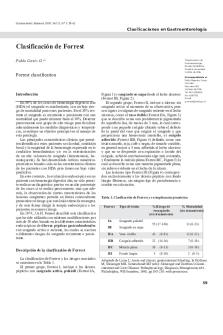Gregor Mendel forrest draft PDF

| Title | Gregor Mendel forrest draft |
|---|---|
| Course | Genetics And Evolutionary Biology |
| Institution | Griffith University |
| Pages | 4 |
| File Size | 70.6 KB |
| File Type | |
| Total Downloads | 83 |
| Total Views | 137 |
Summary
Download Gregor Mendel forrest draft PDF
Description
Who Is Gregor Mendel? Gregor Mendel is hailed as the founder of genetics, as he carried out many experiments that advanced everyone’s understanding of genetics (1). Gregor Mendel was born into a rural family in Silesia, however at age eleven the local priest persisted that Gregor Mendel should go to school (2). Gregor Mendel graduated from a Gymnasium school in 1840, after this he completed a two-year program in philosophy where he shined in mathematics and physics (1). In 1843 Mendel became a monk, as to continue learning as monks valued research and education (1). As a monk Mendel found comforting the sick and dying people very hard and as such was put into substitute teacher role (2). In 1851 Gregor Mendel was sent to the University of Vienna where he studied under Christian Doppler, to learn more about science, he completed his course in 1853 (2). After this he worked as a teacher for 14 years until he was elected Abbot (an Abbot is a leader of a complex where monks work and live) (2).
Experiment In 1854 Mendel was asked to plan a major experimental program at the monastery. The experiment that Mendel came up with was to be able to trace the hereditary characteristics per generation (2). This experiment was done using edible pea plants, this plant was used as it is easy to culture, pollinate and has a high quantity of successful germinations (2). Mendel decided to observe seven different characteristics of the plant some example of traits that were tested were height and color (2).
2 Mendel then bread alternative traits together; an example is a tall pea plant with a short plant to figure out what genetic would be shown (2). Then Mendel would write down the results, he did this for many generations and different traits, documenting everything that was seen (2).
Results The results that Mendel acquired due to this experiment were astounding (2). Two laws were established due to Mendel’s work, ‘Law of Segregation’ and ‘Law of Independent Assortment’ (6). The Law of Segregation means that there are dominant and recessive genes passed randomly from the parents (6). The Law of Independent Assortment means that none of the traits are connected to one another (6). With these laws the genotype (combination of two alleles) and phenotype (observed traits) could be figured out using a Punnett square. There are two types of genotypes: homozygous which is two recessive alleles or two dominant alleles and heterozygous which is a combination of a dominant gene and a recessive gene. With this experiment Mendel put for the reasoning that because the genes changed from generation to generation in pea plant, that this also should happened with all living things. Mendel did a couple of lectures to deliver his findings with the world, however everyone looked at Mendel’s work as being an exception to just the pea plants, even Gregor Mendel was were suspicious (3).
Future of Mendel’s Work Mendel’s work wasn’t recognized till after his death, when three other scientists all working on hereditary, replicated Mendel’s experiment (3). Because of Mendel’s work our knowledge of biology has increased. The knowledge of alleles helped for the discovery of genes
3 and then the understanding of DNA. With all this information it is known that the parents pass on genetic variables that slowly creates evolution. Mendel’s work also created the ideas for natural selection. Natural selection is where some variations in species let the species live longer, meaning that it has a higher chance of reproducing. This is also the opposite for other variations, some variations make the species have shorter lives and as such cannot pass on their genes meaning this variation becomes less prominent (4).
4 References 1. Scitable by Nature Education. Gregor Mendel: A Private Scientist. 2014. 2. Olby R. Gregor Mendel: Botanist. Encyclopædia Britannica, inc.; 2020. 3. Biography.com Editors. Gregor Mendel Biography. A&E Television Networks; 2019. 4. Editors of Encyclopaedia Britannica. Natural selection. Encyclopædia Britannica, inc.; 2020. 5. Famous Scientists. Gregor Mendel. Fomousscientists.org; 2014. 6. https://www.khanacademy.org/science/high-school-biology/hs-classical-genetics/hsintroduction-to-heredity/a/the-law-of-independent-assortment...
Similar Free PDFs

Gregor Mendel forrest draft
- 4 Pages

1-Mendel - mendel
- 42 Pages

Forrest Gump Analysis
- 2 Pages

Mendel
- 4 Pages

Forrest Gump
- 10 Pages

Clasificación de Forrest
- 4 Pages

Forrest Gump Analyst Essay
- 6 Pages

Análisis Película Forrest Gump
- 4 Pages

Mendel packet - genes
- 9 Pages

3 legge mendel - genetica
- 1 Pages
Popular Institutions
- Tinajero National High School - Annex
- Politeknik Caltex Riau
- Yokohama City University
- SGT University
- University of Al-Qadisiyah
- Divine Word College of Vigan
- Techniek College Rotterdam
- Universidade de Santiago
- Universiti Teknologi MARA Cawangan Johor Kampus Pasir Gudang
- Poltekkes Kemenkes Yogyakarta
- Baguio City National High School
- Colegio san marcos
- preparatoria uno
- Centro de Bachillerato Tecnológico Industrial y de Servicios No. 107
- Dalian Maritime University
- Quang Trung Secondary School
- Colegio Tecnológico en Informática
- Corporación Regional de Educación Superior
- Grupo CEDVA
- Dar Al Uloom University
- Centro de Estudios Preuniversitarios de la Universidad Nacional de Ingeniería
- 上智大学
- Aakash International School, Nuna Majara
- San Felipe Neri Catholic School
- Kang Chiao International School - New Taipei City
- Misamis Occidental National High School
- Institución Educativa Escuela Normal Juan Ladrilleros
- Kolehiyo ng Pantukan
- Batanes State College
- Instituto Continental
- Sekolah Menengah Kejuruan Kesehatan Kaltara (Tarakan)
- Colegio de La Inmaculada Concepcion - Cebu





